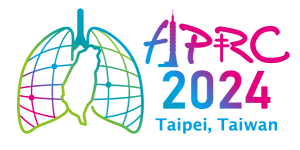Symposium 25:Case Finding: Active Case Finding and Systemic Screening
Systematic screening for TB disease can find patients with TB who may be missed by passive TB case detection and patients with TB earlier to reduce transmission, morbidity, mortality, and financial hardship. This symposium will bring together health professionals and researchers to discuss the screening for TB in targeted populations and tools for screening for TB using a symptom screen, chest X-ray, or molecular WHO-recommended rapid diagnostic tests, alone or in combination. This active case finding is evidenced-based and integrated with overall national TB and health systems activities to achieve Universal Health Coverage for TB care and the END TB targets.
| Time (GMT+8) |
Topic | Speaker | Country / Region |
|---|---|---|---|
| 09:00-09:30 | Active case-finding for TB in Taiwan | Dr. Pin-Hui Lee | Taiwan |
| 09:30-10:00 | New model to end TB in VN | Dr. Huyen Truong | Vietnam |
| 10:00-10:30 | Active Case-Finding (ACF) Strategy in Indonesia | Dr. Fathiyah Isbaniah | Indonesia |
Active case-finding for TB in Taiwan
Abstract:
In Taiwan, despite an overall decline in tuberculosis (TB) incidence from 72.5 to 28 per 100,000 population between 2005 and 2022, specific populations like residents in mountainous aboriginal regions (MARs), inmates, and those in long-term care facilities still face higher TB incidence rates. Notably, medical accessibility for TB care in MARs remains limited, even with 99% coverage under universal healthcare.
For decades, active case finding (ACF) through systematic screening, utilizing mobile chest X-ray (CXR) vans, has targeted residents aged 12 years and older in MARs and inmates. Beginning in 2010, ACF extended to socioeconomically disadvantaged groups and later in 2013, expanded to selectively at-risk groups designated by local health authorities. In 2014, inmate screening integrated into the Ministry of Justice’s healthcare program.
Efforts to eliminate health inequalities in MARs began in 2018, with the adoption of WHO-recommended rapid diagnostics for TB in symptomatic individuals or those with abnormalities on CXR in the ACF program. A subsidy program, initiated in 2020, encourages collaborating health care facilities’ participation in ACF projects for MARs, promoting provider-initiated CXR screening, follow-up, and referral of TB suspects. The ACF yield rate in MARs has been the highest among various populations, ranging from 313-355/100,000 from 2019 to 2022.
However, challenges persist, including difficulties in reaching some mountainous areas with mobile X-ray vans, stigmatization, and delays in confirming TB suspects found during screening. Addressing these challenges, a pilot project in 2024 will evaluate computer-aided detection with mobile ultra X-ray devices, combined with point-of-care diagnostics, aiming to enhance the efficiency and effectiveness of ACF in MARs.
Dr. Pin-Hui Lee

Taiwan
Before serving in TCDC, Pin-Hui received residency training in internal medicine and family medicine in National Taiwan University Hospital from 2003-2006. Pin-Hui graduated from Taipei Medical University in 2003 and also earned the MS degree of Epidemiology and Preventive Medicine in Natio-nal Taiwan University in 2012.
New model to end TB in VN
Abstract:
World Health Organization (WHO) estimated the Tuberculosis (TB) treatment coverage in Vietnam being about 60%. This means that remaining 40% of TB cases in the community have not been detected and treated or not been notified. To end TB in Vietnam, the National Tuberculosis program has conducted and expanded innovative approaches to maximize finding and treating undetected TB cases and LTBI cases in the community.
Along with routine passive TB case finding, active TB case finding (ACF) and intensified TB case finding (ICF) are the prioritized interventions to increase TB case detection and treatment enrollment. Double X strategy which is chest Xray (CXR) screening for all participants and Xpert testing for ones with abnormalities suggestive TB on CXR applying throughout the interventions. ACF events target household contacts (HHCs) of pulmonary TB cases and other risk groups, prioritizing high burden districts, factories, prisons while ICF targets risk groups in non-NTP healthcare facilities.
In 2023, 1,319,283 participants were screened with CXR under all the ACF, ICF interventions, 144,218 (10,9%) had abnormalities on CXR and among those 141,994 (98,5%) were testes with Xpert MTB/RIF, resulting to 27,937 were diagnosed with TB (Yield 2118/100,000 CXR).
ACF and ICF interventions applying double X strategy are the main recovery strategies to increase active TB and latent TB infection detection and treatment after Covid 19 pandemic. In 2023, ACF, ICF contributed to detect 26% TB cases among total notified TB cases in the whole country (27,937/106,085). However, facility-bases case finding through ICF contributed most of the TB cases detected (21,192/27,937 TB cases accounting for 76%).
Building capacity, strengthening intensified TB case finding among risk groups in non-NTP healthcare facilities along with ACF for HHCs and risk groups could contribute significantly to increase TB case and LTBI case detection and notification of the NTP.
Dr. Huyen Truong

Vietnam
Active Case-Finding (ACF) Strategy in Indonesia
Abstract:
The active case finding (ACF) method aims to find early TB cases in the latent phase and undiagnosed TB patients and this activity will greatly impact the community, patients, and cost effectiveness. This method can reduce the incidence of TB disease and also early identification of patients for TB preventive therapy (TPT). Active case-finding also can overcome the geographical barriers and reduce costs for patient diagnosis and management. ACF in Indonesia was implemented in 2 phases, the first phase was implemented from November 2022 to February 2023 and the second phase is currently being implemented from January to May 2024 in 25 districts and cities in 8 provinces in Indonesia. TB screening activities are carried out on all households and close contacts who come into contact with TB patients. The screening algorithm of ACF in Indonesia is divided into two age groups, namely adults and children (under 15 years). In 2021, the Ministry of Health stated that the coverage of TPT in Indonesia is still low, which is 5% in PLHIV and 0,2% in household contact. One of the main objectives of ACF is to find latent TB infection (LTBI) cases in the community and administer TPT immediately. LTBI is diagnosed using the tuberculin skin test (TST) in people with normal x-ray results. TST results in Indonesia are said to be reactive if > 10 mm with a 2-day reading interval. WHO has recommended several regimens that can be given in LTBI cases, especially the 1H, 4R, or 3HP regimens. In pediatric groups, the dose is given according to body weight, preferably 3HP or 6H. As for the prevention of MDR TB, levofloxacin has proven to have good efficacy, but the duration of administration depends on the judgment of the clinician.
Dr. Fathiyah Isbaniah

Indonesia
Prof. Chi-Li Chung

Taiwan
Dr. Erlina Burhan

Indonesia




